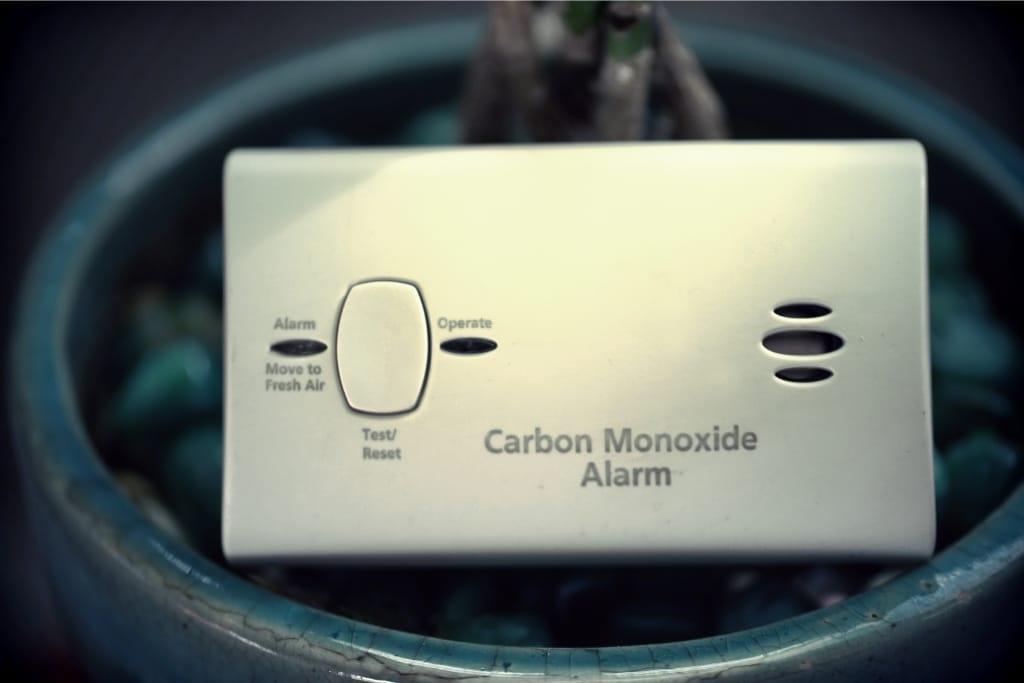Carbon monoxide (CO) poisoning is a silent but deadly threat. Each year, this odorless, colorless gas sends thousands to hospitals and claims lives globally.
The real danger? It’s virtually undetectable without proper precautions.
But there’s good news. Safeguarding your home from carbon monoxide poisoning is straightforward when you know what to do.
We will take you through critical tips, highlight risk factors, and provide actionable steps to keep your household safe.
What Is Carbon Monoxide?
Carbon monoxide is a toxic gas that is produced by the incomplete burning of fuels like gas, oil, wood, and coal.
Appliances like gas stoves, furnaces, fireplaces, and even cars running in enclosed spaces can emit CO.
How does carbon monoxide harm us?
It enters your bloodstream when inhaled, replacing oxygen and depriving your body of its essential supply.
This can lead to symptoms such as dizziness, headaches, nausea, and in extreme cases, death.
The alarming part?
It’s undetectable without proper alarms, as it has no taste, smell, or color.
That’s why equipping your home with preventive measures is critical.
Common Sources Of Carbon Monoxide
To protect your family, it’s important to first identify where CO could originate in your home.
Here are the most common culprits to watch out for:
- Gas Appliances: Stoves, water heaters, and furnaces that burn natural gas can produce CO if they are malfunctioning or poorly ventilated.
- Fireplaces and Wood Stoves: Improperly vented or blocked chimneys can lead to carbon monoxide buildup indoors.
- Vehicles in Enclosed Spaces: Running a car or generator in a closed garage may lead to a deadly concentration of carbon monoxide fumes.
- Portable Generators: Used improperly, gas-powered generators can produce CO and should always be operated outside and away from windows or doors.
- Grills and Camping Equipment: Never use a charcoal grill or camping stove inside your house or garage, even if ventilation is available.
1)) Install Carbon Monoxide Detectors
The most reliable way to detect CO indoors is by installing carbon monoxide detectors.
Choose devices certified by recognized safety organizations, and place one on every level of your home, especially near bedrooms.
- Test the detectors monthly to ensure they’re working.
- Replace batteries twice a year, or as recommended by the manufacturer.
- Replace the detector every 5–7 years, as sensors can degrade over time.
2)) Maintain Heating Systems And Appliances
Regularly servicing your appliances ensures they are operating safely and efficiently.
Schedule annual inspections for the following systems:
- Furnaces and Boilers: Get them inspected by a certified technician.
- Chimneys and Flues: Look for blockages or cracks.
- Gas Stoves: Have a professional check the ventilation and make corrections if necessary.
3)) Ensure Proper Ventilation
- Never block vents or flues that carry CO outside. Ensure they are open and clean at all times.
- Properly ventilate rooms where fuel-burning appliances are used.
- Avoid using unvented kerosene or gas heaters indoors.
4)) Use Appliances Correctly
- Never use grills, camping stoves, or gas-powered tools indoors.
- Avoid using ovens to heat your home.
- Only use a gas dryer, fireplace, or water heater as per the manufacturer’s safety instructions.
5)) Avoid Running Engines Indoors
Don’t run cars, motorcycles, or lawnmowers in enclosed spaces like garages, even if the garage door is open. If you need to warm up your car, move it outside first.
6)) Know The Symptoms Of CO Poisoning
Early detection of symptoms can save lives. Watch out for these warning signs, especially if multiple people in the house experience them simultaneously or pets exhibit similar symptoms:
- Headache
- Dizziness
- Nausea or vomiting
- Confusion
- Shortness of breath
If you suspect carbon monoxide poisoning, evacuate immediately and dial 911 or your local emergency number.
What To Do In Case Of A Carbon Monoxide Leak
Being prepared for emergencies can make all the difference.
Steps to take if your CO detector alarms or a leak is suspected:
- Evacuate Immediately: Get everyone, including pets, out of the house.
- Call Emergency Services: Report a possible CO leak and wait for professional assistance.
- Do Not Re-enter: Stay out of the house until authorities declare it safe.
- Seek Medical Attention: If you or anyone in your household has symptoms of CO poisoning, get immediate medical help.
The Cost Of Ignoring Carbon Monoxide Safety
Neglecting carbon monoxide precautions can have tragic consequences. According to the CDC, more than 400 people in the U.S. die each year, with tens of thousands treated in emergency rooms due to CO poisoning.
Many of these incidents are entirely preventable with the proper safeguards.
Conclusion
Preventing carbon monoxide poisoning at home is all about awareness and preparation.
With reliable detectors, regular maintenance, and correct usage of appliances, you can create a safe environment for you and your loved ones.
Your home should be your sanctuary. With a few easy precautions, you’ll have the peace of mind that carbon monoxide poisoning is one less danger to worry about.
Sacramento Apparel
Embrace the spirit of Sacramento with our high-quality, machine-washable apparel! Whether you're a local or just passing through, our Sacramento Apparel offers a variety of styles, from T-shirts and Tank Tops to Pullover Hoodies and V-neck t-shirts. Our clothing is a perfect way to remember your time in California's capital city or to gift a piece of the Sacramento experience to loved ones. They're made with durability in mind, ensuring that the memories can be worn and cherished for years to come. Explore our collection now and take home a piece of Sacramento pride today!

